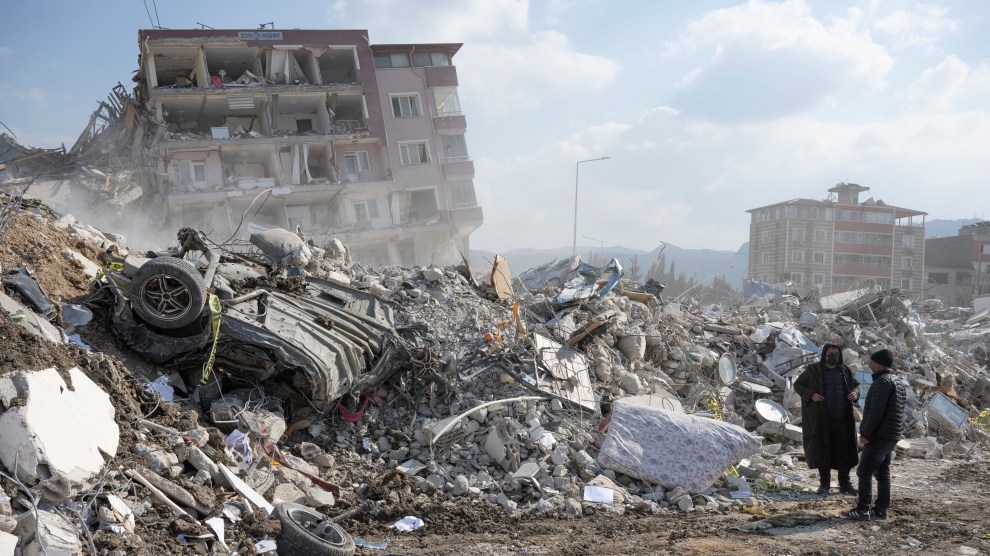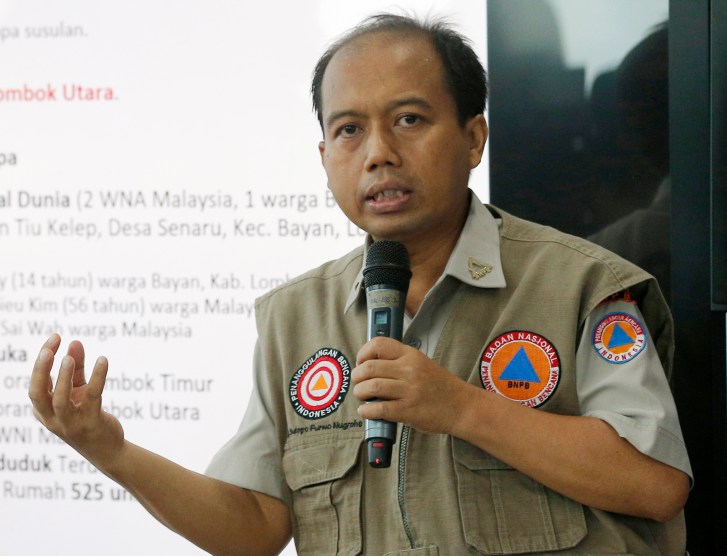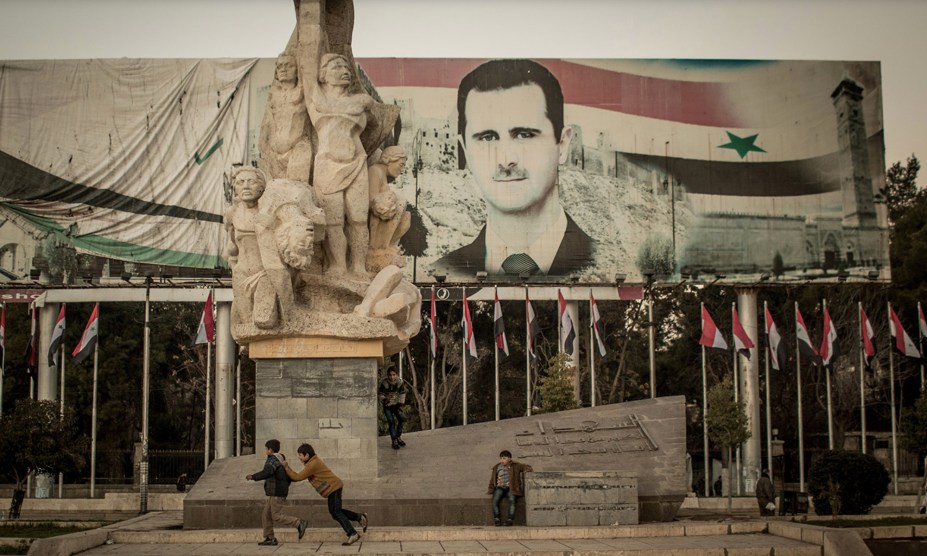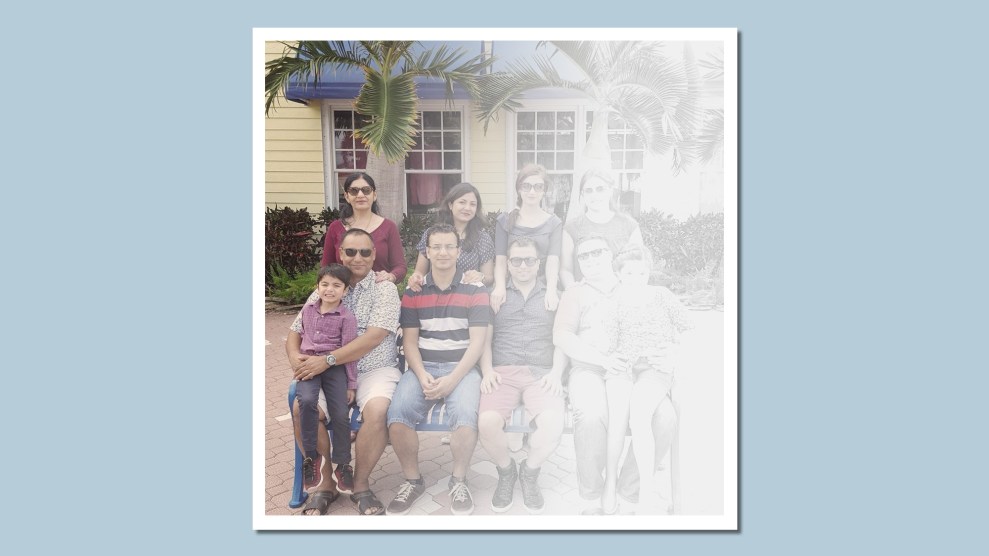
Residents walk through the rubble of their homes in Antakya, Turkey. Boris Roessler/AP
Rescuers in Turkey and Syria continued to pull survivors from fallen buildings on Saturday, as the death toll from a 7.8 magnitude earthquake reached 25,000.
The quake last Monday and its aftershocks led thousands of buildings to collapse in the region, injuring tens of thousands of people and leaving millions homeless during below-freezing temperatures. Turkish President Recep Tayypi Erdogan, touring some of the devastated cities, has called it the “disaster of the century.”
So far, the vast majority of those killed—about 22,000 of the total victims—have been found in Turkey. In war-torn Syria, especially in opposition-held territory, rescuers have been forced to work with extremely limited resources, sometimes digging with their hands and simple construction tools to locate survivors. They’ve criticized the international community for failing to offer them enough aid, as the Syrian government in Damascus has restricted access to the area during the war. The UN aid chief, Martin Griffiths, said he wanted Syrian rescuers to receive more assistance, but noted on Saturday that the situation there “was not clear yet.”
















